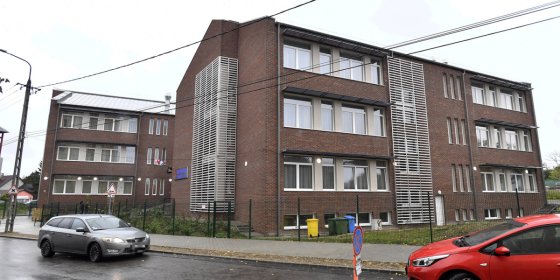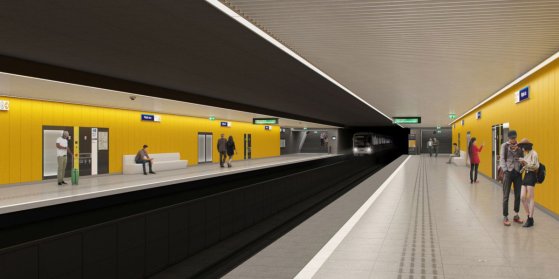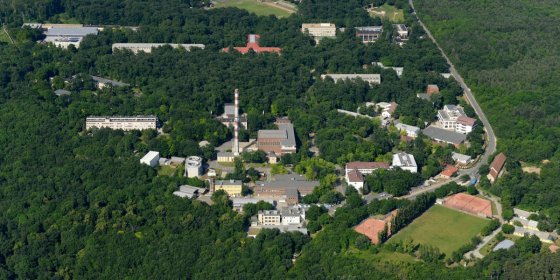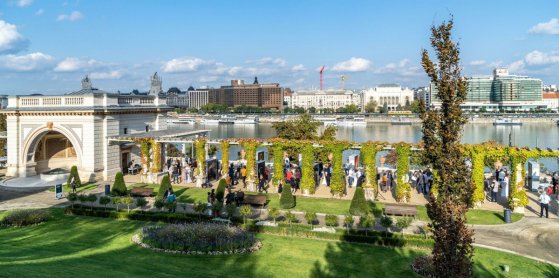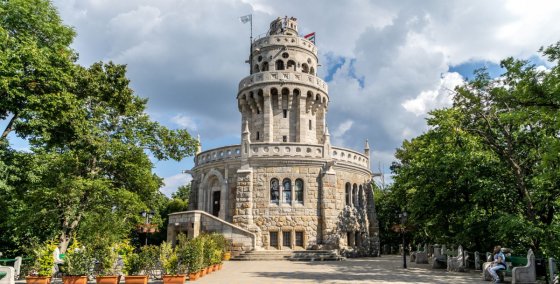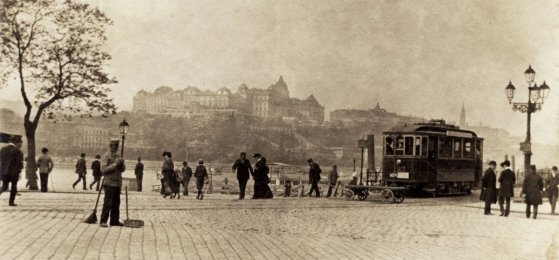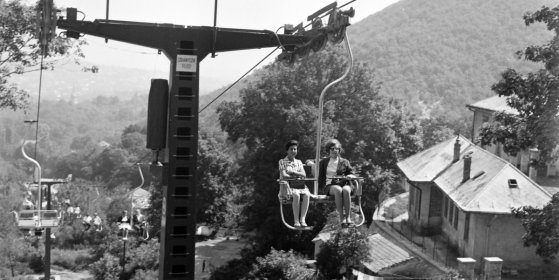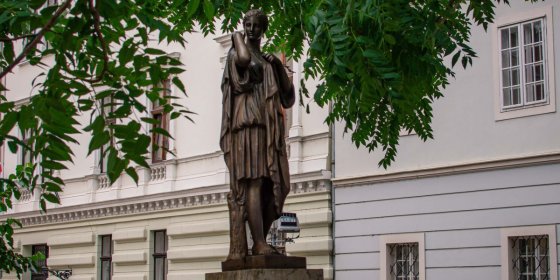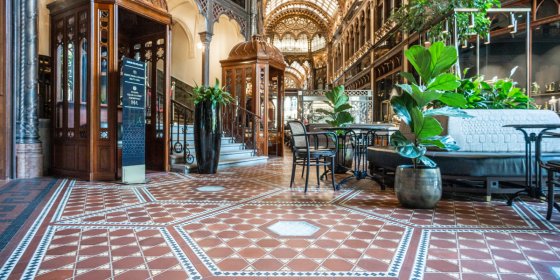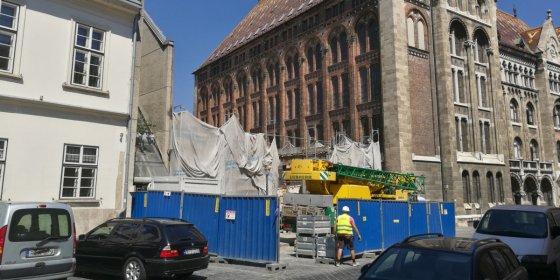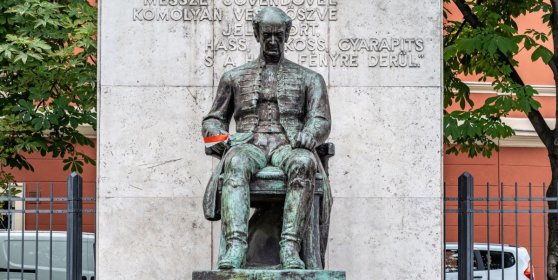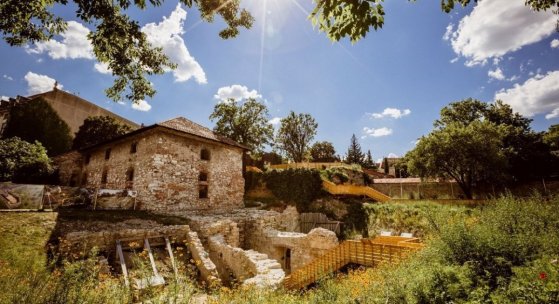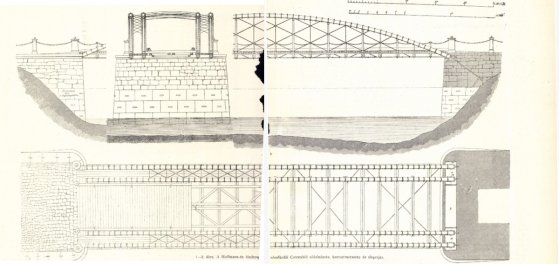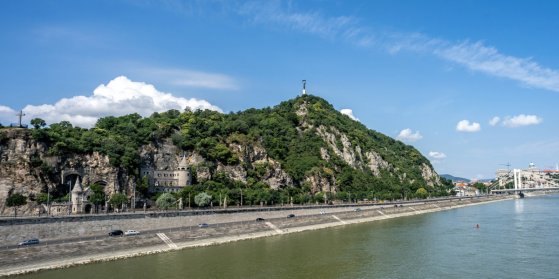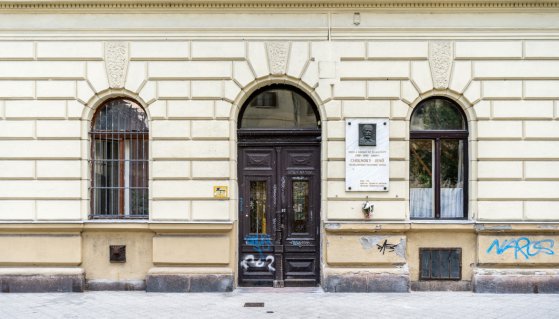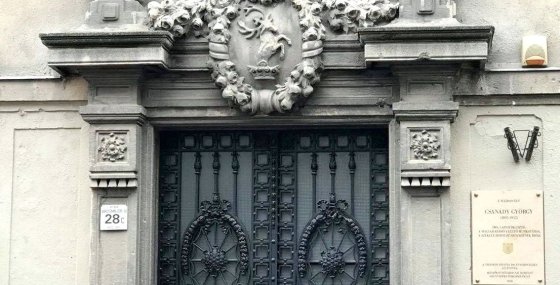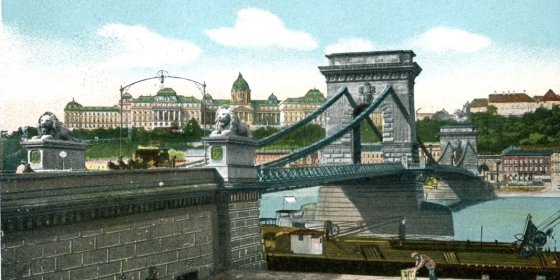 The „intertwined history” of the bridges and the city of Budapest
Which ideas and events have shaped the fate of bridges of Budapest and the cityscape? Alongside many other interesting facts, this question is also answered this newly published book by the Budapest City Archives, which introduces the history of bridges in Budapest.
The „intertwined history” of the bridges and the city of Budapest
Which ideas and events have shaped the fate of bridges of Budapest and the cityscape? Alongside many other interesting facts, this question is also answered this newly published book by the Budapest City Archives, which introduces the history of bridges in Budapest.
Buda
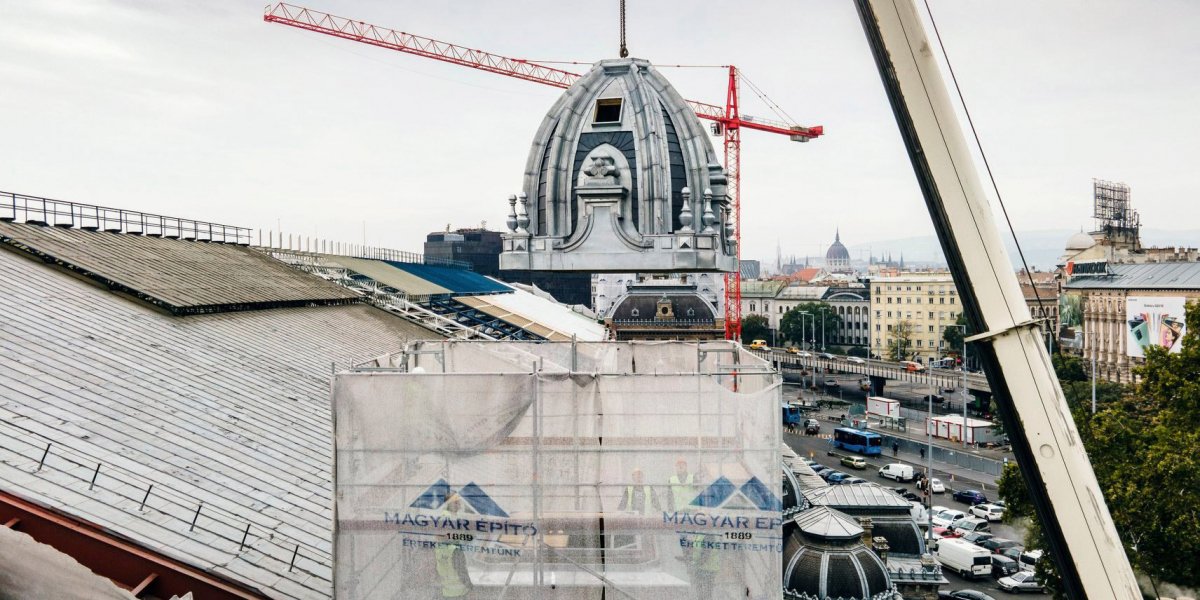 First renovated spire of Western Railway Station completed
First renovated spire of Western Railway Station completed
October 24, 2020 at 5:00 PM
Renovation of the 8,200 square metre roof of Nyugati Pályaudvar, the Western Railway Station has reached a spectacular stage. The first of the spires for the towers on the rear facade has been raised into place. Meanwhile, the new glass panels of the roof are being installed, and the roof structures of the towers on the main facade toward Teréz Boulevard are being removed.
After 77 years a new Secondary School of the Reformed Church is opened in Budapest
October 18, 2020 at 10:00 AM
The new building complex of the Rózsakerti Demjén István Reformed Primary and Secondary School in the 22nd District was inaugurated through a thanksgiving service, with Viktor Orbán, prime minister, attending. A belfry was also built alongside the school. The bell is decorated with a map of historical Hungary to symbolise the unity of the Hungarian people. The event is made al the more significant by the fact that the last new Reformed Secondary School built in the capital was opened in 1943, 77 years ago on Lónyay Street in the 9th District.
Southern section of M3 metro line to be opened on 22 October
October 15, 2020 at 7:30 PM
Renovation of the section began in April 2019 and was completed recently. Four stations of the line have been rebuilt. Its tunnels renewed, the track network, signals and safety systems modernised, alongside passenger information and other electrical systems. The renovated metro section will be opened to the public at 5 pm on 22 October. Following the opening the metro will again run the full length of the line but not stop at its central stations: Semmelweis klinikák, Corvin Negyed, Ferenciek tere and Arany János utca.
Founded 70 years ago the KFKI served as a meeting place for Nobel laureates
October 8, 2020 at 2:00 PM
The Central Physics Research Institute, KFKI was established in Csillebérc seventy years ago. Near Normafa the institution quickly became a central location of scientific and academic life in Hungary and was visited by several Nobel Prize-winning researchers. The first nuclear reactor in Hungary, which is still operational, was built here, and the Pille radiation dose meter was also developed on the campus. Scientists awarded by NASA have also worked within its walls. Divided into several divisions after the end of socialism in Hungary, Csillebérc still houses committed researchers.
Legends from Buda Castle: Descendants of Hauszmann and Strobl join opening of new photographic exhibition in the Castle Garden Bazaar
September 25, 2020 at 12:00 PM
The descendants of the Alajos Hauszmann, the Teleki family and Alajos Strobl can be seen in the portraits newly on display on the Southern Panorama Terrace of the Castle Garden Bazaar. The exhibition entitled legends from Buda Castle – open until 15 November – highlights the connections between the Castle and Budapest through the lives of people deeply connected to the Castle District.
The most Hungarian Habsburg moved to Buda 225 years ago
September 17, 2020 at 11:00 AM
Eventually serving as Palatine of Hungary for over 50 years, the young prince being raised in Florence would never have been expected to later be known as the Most Hungarian Habsburg. Palatine Joseph was only 19 when he moved to Budapest with much ceremony 225 years ago. He settled in the country, lived here with his wife and children, died here and was buried in the crypt of the Royal Palace in Buda Castle. His popularity was founded on the attention he paid to the prosperity of Buda and Pest.
Queen Consort Elizabeth and the most beautiful lookout tower in Budapest
September 8, 2020 at 9:00 AM
The Elizabeth Lookout Tower atop János Hill in Budapest was opened with much ceremony 110 years ago. The tiered, cylindrical tower of snow-white limestone has since then become an unmatched staple of the Buda Hills, as it is visible from large swathes of the city. The present form of the lookout tower should be attributed to Frigyes Schulek. To honour the tower's anniversary, we have collected various images and stories from its past.
Clean Budapest – The city has been cleaned regularly for 125 years
August 28, 2020 at 9:00 AM
The inhabitants of Pest and Buda used to carry garbage to rubbish pits or simply drop it on the banks of the Danube. Because of this, there was often an unbearable stench in the two cities. All this changed radically 125 years ago when an office was established in the capital to clean the roads of Budapest and collect rubbish.
Brides, stuntmen and sandbags have travelled on the Chairlift – Budapest's most unique means of public transport
August 19, 2020 at 10:00 AM
The János Hill chairlift is one of Budapest's most interesting means of transport and has been serving the city since 19 August 1970. There are several interesting facts connected to it. Few know that the first “passengers” on the chair lift were sandbags. A wedding was once held up in the air, and the Trapper jeans brand also shot a commercial on the lift, with a stuntman travelling above the city standing up.
A wandering Greek goddess that found a home next to Magdolna Tower – The Hebe Fountain has stood at several points of Buda Castle
August 17, 2020 at 9:00 AM
The Hebe Fountain in Buda Castle, also known as the Artemis Fountain, now stands in an intimate little unnamed square at the foot of the Magdolna Tower, at the northern end of Úri Street. It seems that this 19th century well statue, previously erected in two other places in the Castle, has found its final home. For various reasons, the Greek goddess has been moved from two other locations before. The nomadic statue also has two names: after its inauguration, it was identified from Greek mythology as the figure of Hebe, when in fact, it was a copy of a statue of Artemis in Paris.
A footprint of Budapest – Stunning paving stones hide in old building around Budapest
August 15, 2020 at 10:00 AM
How many times have we been told to watch out steps? The saying can be useful when walking the streets of Budapest near open doorways because the capital's architecture is more than the facades facing the street! Entering through the gates, we drop into a closed world, where those paying attention will discover many beautiful details. The most colourful of these, in addition to painted glass windows, are floor pavings.
Most of the National Electric Load Distributor in the Castle has been demolished
August 14, 2020 at 9:00 AM
The demolition of the controversial-looking industrial building next to the Bécsi Kapu Square Palace of the Hungarian National Archives has progressed quickly in recent weeks. Only the tower, part of the iron structure and a firewall remain. The former National Electric Load Distributor that has been in a dilapidated condition for a long time will be replaced by a house
In the footsteps of Kölcsey – The poet who wrote the national anthem of Hungary was born 230 years ago
August 8, 2020 at 4:00 PM
Ferenc Kölcsey, born 230 years ago, was one of the greatest figures of Hungarian literature and public life in the Reform Period. His poem, Himnusz ('hymn'), which became the Hungarian national anthem, elevated him among the immortals of Hungarian culture. Despite this, his memory was not marked in Budapest by any public statue or plaque for a long time. Pestbuda examines the current memorial to the great poet in Budapest.
The lid of a Venetian cure-all and a medieval staircase have been unearthed in the newest cultural area in Buda Castle
August 7, 2020 at 11:00 AM
The outdoor site of 9 Táncsics Street has been reborn as the T9 - The First Bastion archaeological exhibition and cultural community space. The former József Barracks and Prison building is continuously revealing the layers of its history. During the current archaeological excavation, the remains of a medieval and Ottoman building that used to stand here have emerged from under the floor of the house.
The dream of connecting Buda and Pest – Creator of the first Hungarian steamboat designed a bridge between the cities
August 3, 2020 at 1:00 PM
Antal Bernhard, the creator of Carolina, the first Hungarian steamboat, also designed a bridge design to connect the cities of Pest and Buda. Before the construction of the Chain Bridge, nearly two dozen proposals were made on how to bridge the river, and among these, Bernhard’s plan was an important idea because it could actually have worked.
A neglected landmark – A walk on Gellért Hill
August 1, 2020 at 1:30 PM
Despite it being a symbol of Budapest, a popular walking destination, and a nature reserve in the city's heart, Gellért Hill has been neglected for decades. Unfortunately, the situation is beyond slight renovation – a complete replanning and reconstruction are needed.
Jenő Cholnoky, one of the greatest Hungarian geographers, born 150 years ago
July 23, 2020 at 9:00 AM
Every day we walk past buildings whose past we know nothing about. The block of flats delimited by 29 Rákóczi Road - 1 Gyulai Pál Street - 4 Stáhly Street are similar. Today Pestbuda the site because the famous geographer Jenő Cholnoky was born 150 years ago and 100 years ago, in 1920, he moved here. His work is immense, yet he is mostly associated with the study of China and Lake Balaton. Look at his connections in Budapest with Pestbuda.
The Székely national anthem was first played in Budapest – Memorial plaque unveiled on the lyricist's home
July 19, 2020 at 3:00 PM
While many Hungarians know the lyrics to the Székely national anthem, while the work written soon after the Treaty of Trianon was signed quickly became symbolic of Hungarian unity, few know the name of the writer who originally wrote the lyrics: György Csanády. To honour the writer's memory, born 125 years ago, a memorial plaque has been unveiled on the 12th-district house he lived in.
From Pest to Gellért Hill by funicular
July 16, 2020 at 3:00 PM
Reaching Buda from Pest downtown at the end of the 19th century was not easy. Climbing to the top of Gellért Hill had similar issues. These two problems would have been solved by the truly spectacular idea of János Ruppenthal, i.e., building a bridge and a funicular.
The first steamboat sailed from Pest to Buda two hundred years ago
July 13, 2020 at 11:00 AM
A bizarre machine started operating 200 years ago on the Danube between Buda and Pest. A 13-metre-long, small, smoking structure, with a large wheel on each side, splashed water and towed a passenger barge after it. Although the company lived for only a year, it started steam navigation on the Danube.
The Chain Bridge Purchase – 150 years ago the State bought the Chain Bridge
July 1, 2020 at 12:00 PM
What is now a famous Budapest landmark, the Chain Bridge, was originally constructed by a private company and opened in 1849. In return, the company received a range of financial benefits from the state, including the right to charge everyone for crossing.
More articles
 The „intertwined history” of the bridges and the city of Budapest
Which ideas and events have shaped the fate of bridges of Budapest and the cityscape? Alongside many other interesting facts, this question is also answered this newly published book by the Budapest City Archives, which introduces the history of bridges in Budapest.
The „intertwined history” of the bridges and the city of Budapest
Which ideas and events have shaped the fate of bridges of Budapest and the cityscape? Alongside many other interesting facts, this question is also answered this newly published book by the Budapest City Archives, which introduces the history of bridges in Budapest.
 The Bridge Report, which brought a turning point in the history of Budapest
A travel report that changed the history of Pest and Buda, as well as Hungary. The little book contributed to the change of half a thousand years of legal customs and the implementation of an investment of unprecedented size and technical quality. This book was The Bridge Report [Hídjelentés in Hungarian].
The Bridge Report, which brought a turning point in the history of Budapest
A travel report that changed the history of Pest and Buda, as well as Hungary. The little book contributed to the change of half a thousand years of legal customs and the implementation of an investment of unprecedented size and technical quality. This book was The Bridge Report [Hídjelentés in Hungarian].
 Drama on the university wall - The heroic monument was planned 95 years ago
In the constant hustle and bustle of the Egyetem Square in Pest, the students may not even notice the monument that decorates the short section of wall between the church and the central building of ELTE. However, it commemorates their predecessors, the heroes who fought for their country in World War I, and those who heroically helped them. The first design of the dramatically collapsing soldier was born in 1928, ninety-five years ago.
Drama on the university wall - The heroic monument was planned 95 years ago
In the constant hustle and bustle of the Egyetem Square in Pest, the students may not even notice the monument that decorates the short section of wall between the church and the central building of ELTE. However, it commemorates their predecessors, the heroes who fought for their country in World War I, and those who heroically helped them. The first design of the dramatically collapsing soldier was born in 1928, ninety-five years ago.

